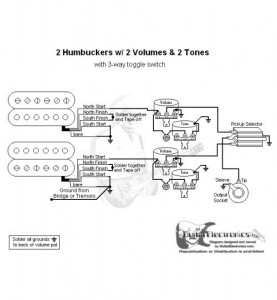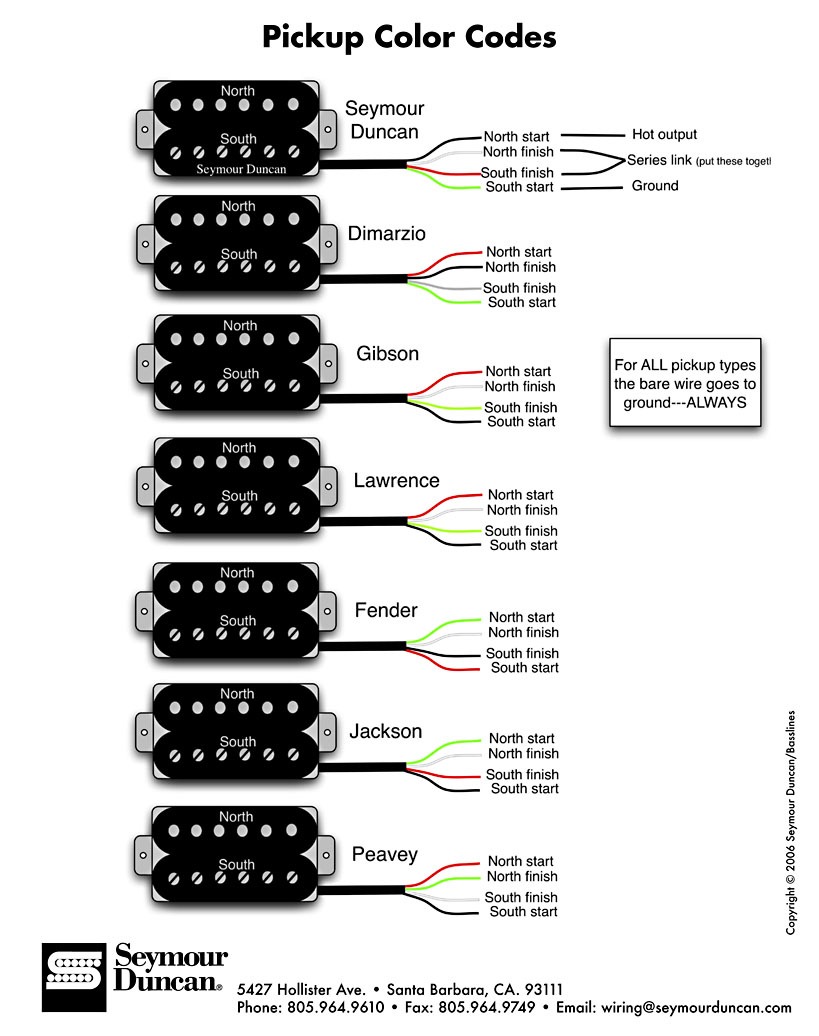
Humbucker Wiring
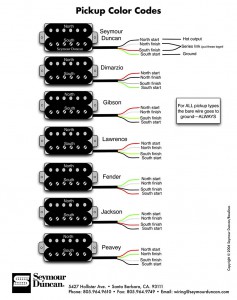
First, refer to this great color chart, courtesy of Seymour Duncan (at right). If your pickup manufacturer isn’t on this list, try this StewMac pickup color codes page, which includes Fralin, Barden, etc. Another option is this color code chart at Guitar Electronics.
If your pickup doesn’t seem to match any of these color code charts, you can use the techniques described in this FAQ by Tim Stanley on identifying the wires using a multimeter.
Once you know which wire is North Start and Finish, and South Start and Finish, then you can refer to the humbucker circuit diagrams at GuitarElectronics.com. They have every variation imaginable, with coil tapping, push pulls, series/parallel, 3-way levers, 5-way levers, etc.
Here’s a typical Gibson wiring with 2 volume, 2 tone and a 3-way toggle switch:
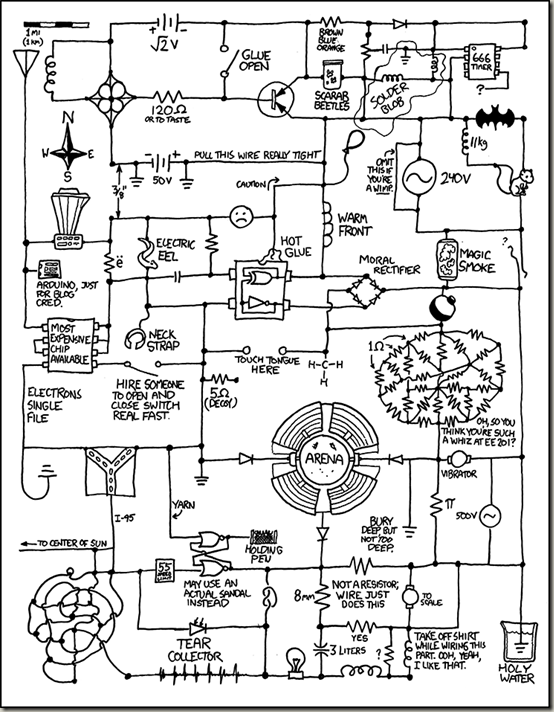
Understanding Circuit Diagrams
I know, circuit diagrams can get really confusing. This has all the answers:
Image courtesy of the comedic genius of xkcd
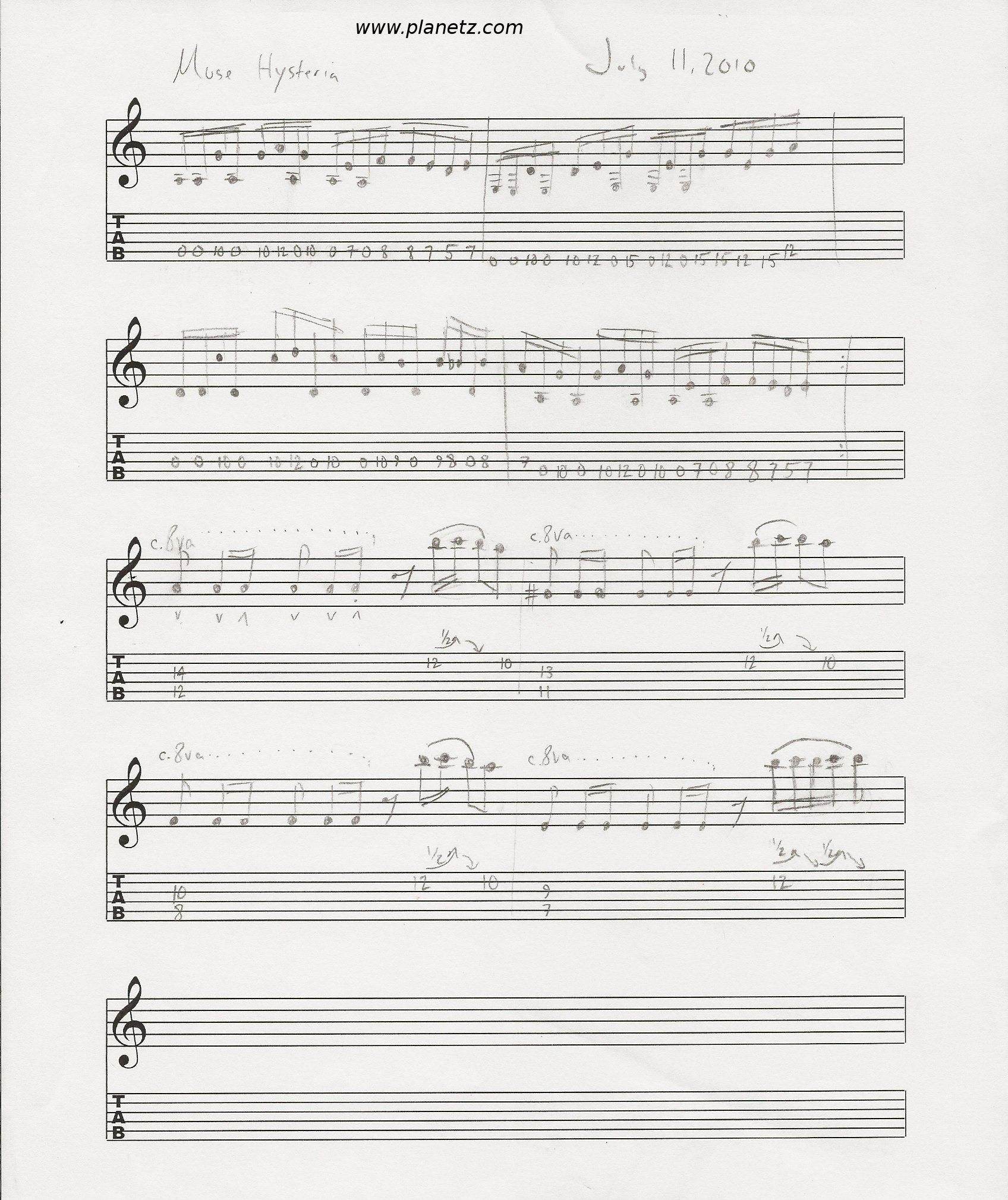
Alternate Picking Hysteria
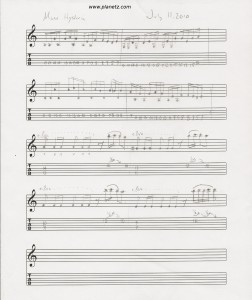
So my suggestion is to find a great song that’s fun to play, figure it out (write it down if you can), and use it as your exercise. Start slow, then try to get it up to speed.
Lately, I’m playing Hysteria by Muse. Excellent song! The intro bass part is great to play on guitar (see my transcription at right), and of course the guitar solo is a great finger gym exercise too. Alternate picking throughout.
Justin Sandercoe also has a great online lesson for Hysteria. Check it out.

Tone Cap Polarity Revisited

Electrolytic caps are polarized, and can fail or explode if you connect them up backwards. But we don’t use electrolytics for guitar tone – the caps we typically use (polyester film, paper-in-oil, etc) have no significant polarity.
Now, film and foil caps (like Orange Drops and Mallorys) do have an outside foil-wrapping which is used for shielding and is connected on one of the leads of the cap. Ceramic and silver mica caps aren’t built with an outside foil wrap.
Apparently, according to this article by Dirk Wacker in the new issue of Premier Guitar, it may actually make some difference to the sound which way you connect the outside foil of a cap.
I haven’t noticed it myself, but it obviously depends on the guitar, pickups, amp, wire, capacitors, and the ears 🙂
Caps aren’t typically marked for which is the outside foil end- and I don’t know of any way to tell which is which. So, in short, try your tone cap both ways and if you hear that one way sounds better than other, then go for it. If you don’t hear a difference, don’t worry about it!
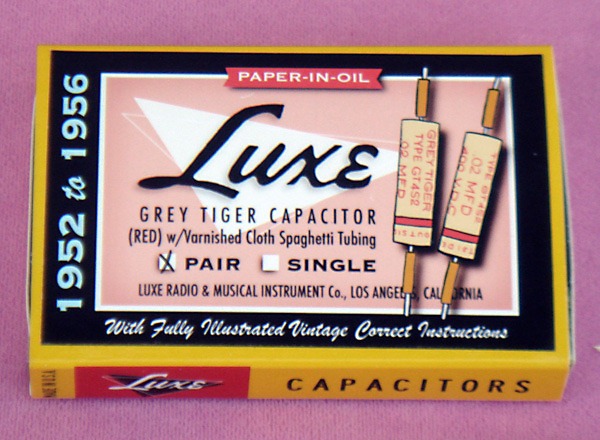
Another Tone Cap Shootout
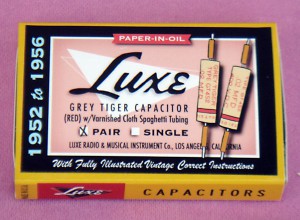
I just came across this audio comparison by “Kernel of Wisdom” which examines a bunch of the more expensive tone caps including a vintage bumblebee, modern bumblebee, Jensen Paper-In-Oil, Vitamin Q, and Luxe Grey Tiger.
Have a look and a listen!
